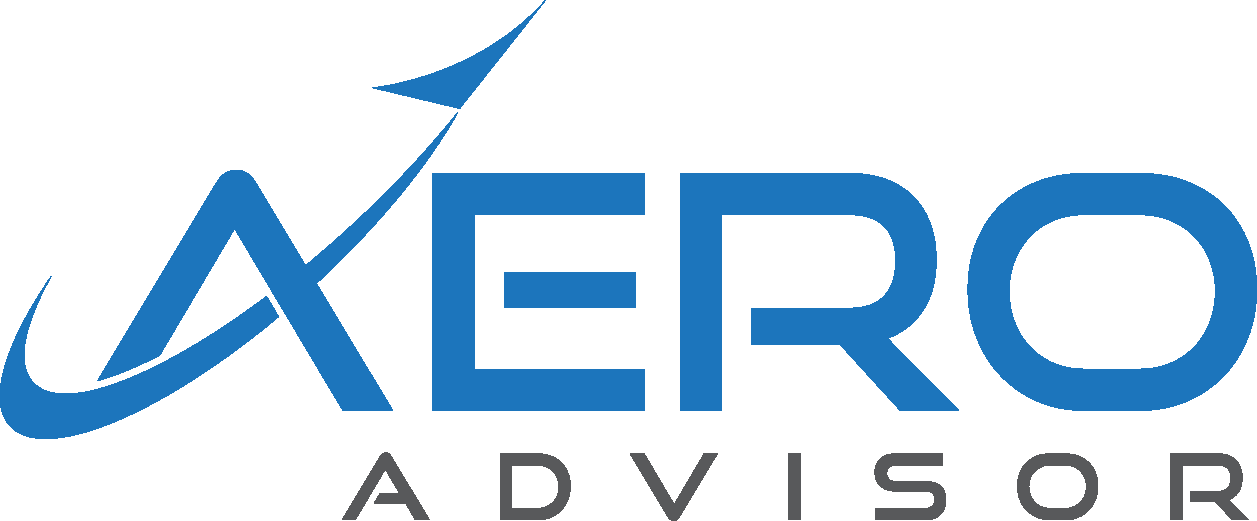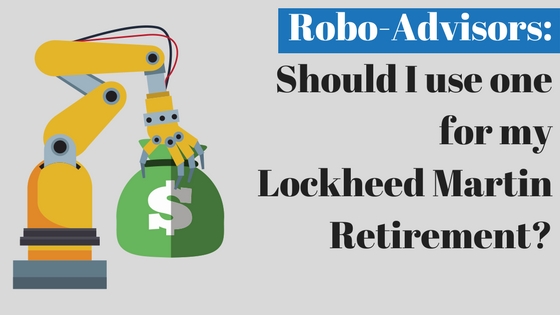“Should I use a robo-advisor for my Lockheed Martin retirement?” The term “robo-advisor” has become an investing buzz-word over the last several years. I thought I’d try to take a big picture look at what the term means and look at the positives and negatives of using a robo-platform for your investment needs. Then you can decide if it might be a good option for your retirement planning needs.
What does robo-advisor mean?
The term robo-advisor basically means you are using a computer program to solve your investment or overall financial planning needs. The computer program may use a combination of your age, a questionnaire, market conditions and other factors to figure out what might be the best strategy for you. The account opening and account maintenance process is pretty streamlined to make it as easy as possible to sign up and monitor.
What are the benefits of using a robo-advisor?
Simplicity. Most of the time you’ll open an account, transfer in assets, connect a bank account, etc. all without picking up the phone or speaking to a real person. The investment advice will usually be pretty straight-forward as well, so most likely easy to implement.
Most platforms will select investments and rebalance them for you as well, so it can make investing a lot less involved for the (former) DIY investor.
Speed. With the continued improvement of technology, some robo platforms can have your account set up and funded in the same day. You might even be able to start your investment plan the same day. With a traditional platform, it could take a few 3-4 days to meet with an advisor, get accounts open, transfer in assets, etc.
Cost. Since most of these platforms are scalable – meaning it requires about the same employee manpower for 1 account or 100 with the use of algorithms and other tech, they can keep the costs pretty low. Some platforms might charge a fee as low as 0.3%. Most platforms also may have some optional personal advice available for an extra fee.
Low cost amount to start. Some platforms have $5,000 or lower minimums to start investing. This can be considerably lower than a traditional financial advisor who might have account minimums of $100,000 or higher.
The disadvantages of using a robo-advisor
Basic planning. The computer program that manages your assets is not going to be able to custom-design a financial plan for you. If you’ve got difficult decisions to make about employee stock options, buying and selling investment property,

Hopefully this guy isn’t in charge of your retirement.
Call center help. Most platforms are going to have a 1-800 number for you to call into. You will most likely get a different person you talked to the previous time, and he/she may or may not be on their first day on the job. For an additional fee, some companies will allow you to work with a specific person or planner.
Limited options. Most robos only allow you to invest in their portfolios using cash, and if you’re coming over from a major firm or online trading account, you might have to sell funds before you transfer them in. This can create tax issues with capital gains/losses, so make sure to keep that in mind before you make the switch.
Summary
Overall, the robo-advisor has provided millions of people with the ability to invest in the market, make financial planning decisions and save for retirement. If you’re a hands-off investor that doesn’t have too complex of a financial picture, then a robo-advisor platform might be a good option for you.
You can always hire an advisor or planner later when you situation changes or you get closer to your Lockheed Martin retirement.
Now for the sales-y pitch. If you like the idea of a rob0-advisor and want access to a financial advisor (me), check out the link below for more info on our robo platform. It’s pretty simple to sign up and get started, and if you have questions or need help, I (a real person not in a call center)






